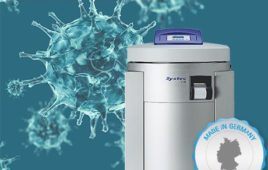WE PARTICIPATED in the Medtec conference and trade show in Stuttgart in February,2005 during which we presented a workshop on cleaning and contamination controlissues with biomedical devices. This event provided fascinating perspectivesregarding trends in industrial processes related to biomedical devices (specificallyin standardization efforts), the merging of device and drug, areas of commercialemphasis, and the acute concern of workshop attendees with cleaning and contamination control.
Standardizing the Standards
Those of us involved in manufacturing in the United States are acutely aware of the problems posed by conflicting environmental regulatory requirements. The medical device community is understandably concerned with regulatory and manufacturing standards and requirements. Given the plethora of standards in the United States, Europe, and Japan, harmonization has become a recurrent theme. One long-term effort involves devising numbered, standardized descriptionof devices. The FDA is actively involved in these efforts.
Drug or Device
Participants in the conference and the trade show observed the trend toward merging implantable devices with drug delivery systems. Because regulatory agencies, notably the FDA, manage pharmaceuticals and devices differently, determining whether a product is to be classified as an implantable device or a drug delivery system has become an important issue. Tutorials were, in part, concerned with elucidating how a producer of a new product should treat their product—device or delivery system. One would also expect that the melding of drug and device will also tend to exacerbate contamination issues. In addition, it would seem that such hybrid devices inherently impelwell-defined surface attributes.
Commercial Emphasis
The medical device community is indeed global, so it was perhaps not surprising to see vendors from the United States. The exhibition did have its own distinctive flavor (beyond the European chocolates), with an emphasis on miniature components, automation, and advanced technology. Reportedly in response to the decline in production of Swiss watches, several suppliers displayed automation equipment specifically designed for the assembly of miniature devices in clean environments. In addition, we observed at least a few companies that were offering nanotech-based technology as part of the product, specifically for specialized coatings. Surprisingly, given the emphasis on precision and advanced technology, veryfew products were offered for cleaning and surface quality.
Productive Worrying
In contrast to the exhibition, participants in our workshop on cleaning and surface quality were acutely aware of cleaning and contamination control issues, beyond sterilization requirements. The initial questions related to what cleanliness standards they might have to meet, how clean is clean enough, how do we avoid corrosion. There was interest in a standard for overallresidual contamination [1].
In addition, there were questions regarding the nuances of behavior of various cleaning agents. There was also great interest in details of vapor degreasing for cleaning and reflux condensing for extraction of contaminants. One important issue, relating to both cleanliness and to product design, related to products with on-going use in a hospital environment, specifically to minimizing the impact of those products as sources of contamination.
Most encouraging, workshop participants worried about the details of contamination. They asked the right questions and debated the issues. What are the specific contaminants of concern? How might these contaminants impact product performance? How will a process change, a solvent or cleaning agent change, impact product-performance, in both the long and short-term? How can a present process be benchmarked for comparison with a proposed solvent change? We debated the pros and cons of absolute contamination levels versus the more realistic goal of cleanliness relative to a device with proven performance.
One attendee raised the issue of the consequences of solvent substitution on outgassing. It is important to demonstrate that smaller amounts of solvent are adsorbed in plastics and composites. How does one know that the new solvent will not have undesirable consequences, even if the new solvent is adsorbed at a lower level? Outgassing is an important issue, and will be the subject of our next column.
Reference:
- Kanegsberg and Kanegsberg, A2C2, July 2004 (update, ASTM F04.15.17 committee)
Barbara Kanegsberg and Ed Kanegsberg are independent consultants in critical and precision cleaning, surface preparation, and contamination control. They are the editors of “Handbook for Critical Cleaning,” CRC Press.Contact them at BFK Solutions LLC., 310-459-3614



